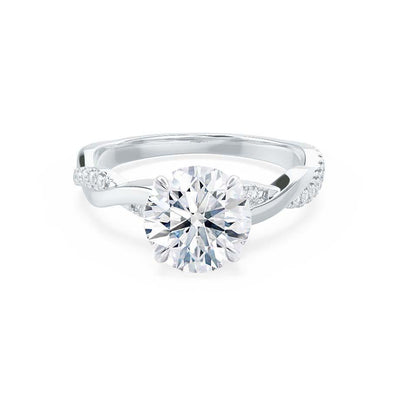Lab grown diamond engagement rings uk have become increasingly popular in recent years, as consumers seek eco-friendly and sustainable alternatives to traditional, naturally sourced diamonds. But what is the history of lab diamond production, and how has this process evolved over time?
The earliest attempts at creating lab diamonds date back to the late 1800s, when a scientist named Henri Moissan first attempted to create diamonds with a high-temperature, high-pressure process. However, it wasn’t until the 1950s that the first commercially successful lab-grown diamond was produced using a similar process called the vapor deposition method.
Over time, lab diamond production continued to evolve, with improvements in the quality and size of diamonds that could be created. In the 1990s, a new process called the high-pressure, high-temperature (HPHT) method was developed, which created diamonds of higher quality and larger sizes than ever before.
The HPHT method involves subjecting a diamond seed to high temperatures and pressures, causing a series of chemical reactions that create a new, larger diamond crystal. These diamonds are structurally identical to natural diamonds, with the same physical and chemical characteristics.
In the early 2000s, another method of lab diamond production was introduced, called chemical vapor deposition (CVD). This process involves subjecting a diamond seed to a gas mixture containing carbon and other elements, causing a chemical reaction that creates a diamond crystal.
CVD diamonds have become increasingly popular in recent years due to their ability to create high-quality, large diamonds at a lower cost than traditional HPHT methods. CVD diamonds can also be created in a wider range of colors than HPHT diamonds, making them a popular choice for engagement rings and other jewelry.
Today, lab diamond production continues to evolve, with new methods and technologies being developed to create diamonds that are even larger, more beautiful, and more sustainable than ever before. As a result, lab grown diamond engagement rings in the UK have become a popular choice for consumers who want a sustainable, conflict-free option for their special day.
One of the major benefits of lab grown diamond production is that it is more sustainable and eco-friendly than traditional diamond mining. Diamond mining can have a significant environmental impact, including habitat destruction, water pollution, and carbon emissions. By contrast, lab grown diamonds have a much smaller environmental footprint and do not involve the same ethical concerns as traditional diamond mining.
In addition, lab grown diamonds offer many of the same benefits as natural diamonds, including their durability, sparkle, and long-lasting value. They are also indistinguishable from natural diamonds to the naked eye, and are often less expensive than natural diamonds of similar quality and size.
Overall, the history and evolution of lab diamond production has been a remarkable journey, with significant strides in technology and sustainability. Lab grown diamond engagement rings in the UK are a beautiful, affordable, and sustainable option for couples who want to celebrate their love in a way that is both ethical and eco-friendly.

